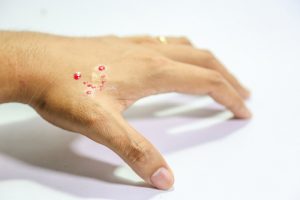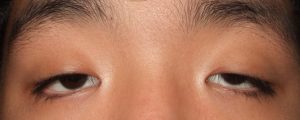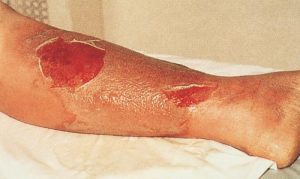Snakebite accounts for more than 100000 deaths annually worldwide. In Pakistan, it is estimated that 40000 snake bites are inflicted every year, out of which about 10000 patients die.
Most of these bites are inflicted during the monsoon season (July to September). Men aged 20 to 60 years are affected more probably because of the nature of their jobs.
Scientifically snakes are divided into different species, genera, and classes. We will focus on the effects of snake venom on the human body and the features with which the person may present.
Clinical features of snakebite.

Most of the snakes in Pakistan are hemotoxic followed by neurotoxic and myotoxic. All these patients may have local signs of envenomation. This is manifested by two fang marks, local swelling, redness, blister formation and of course severe pain.
Bleeding is the main feature of hemotoxic snake bites:
Most patients with hemotoxic snakebite may have a subclinical bleeding diathesis. There may not be overt bleeding but blood tests might be suggestive. A simple test is the twenty-minutes whole blood clotting time, which can be performed at the bedside.
This is performed by taking 3 ccs of the patient’s blood and keeping it at room temperature for about 20 minutes. The presence of a clot after 20 minutes suggest a normal response. The absence of a clot is an indicator of subclinical bleeding diathesis.
Laboratory tests include prothrombin time and activated partial thromboplastin time.
Patients with overt bleeding may have epistaxis or nosebleeds, gum bleeding or blood in urine, cough, and vomitus. Bleeding may be noted by the patient after minor trauma.
Patients may also note reddish spots over the skin, indicating bleeding under the skin. Rarely, patients may develop bleeding in the brain which may be rapidly fatal.
Neurotoxicity may range from subtle symptoms to severe respiratory failure.

Neurotoxicity can be subtle and be missed or may present with severe respiratory failure necessitating ventilatory support. The small muscles of the body are usually affected first.
Thus patients usually present with ptosis which is the inability of the eyes to open. Patients may not be able to look upwards or get fatigued very easily. Patients might also develop facial asymmetry and weakness of the upper and lower limbs. Thus patients will not be able to stand or walk.
In severe cases, the respiratory muscles are affected and the patient might develop difficulty in breathing.
A forced vital capacity of less than 15ml/kg is an indication for ventilator support. Single breath count of less than 18-20 per breath or a dropping count of less than 50% from the baseline may also be suggestive of the patient requiring intensive care.
When the muscles of swallowing are affected, the patient will not be able to swallow and will have drooling of saliva from the mouth. A nasogastric tube placement for feeding may be required in these cases.
Myo-toxicity is manifested by severe muscle pain and kidney failure.
Myotoxicity is a feature of sea snakes but the venom of other snakes can also affect the muscles. Myotoxicity is muscle necrosis leading to rhabdomyolysis. When muscle cells die, myoglobin is released into the blood.
Excess myoglobin can get deposited in the kidneys and cause kidney failure. This will also be accompanied by severe pain and weakness in the muscles.
Miscellaneous features.

Patients might present with high-grade fever and local cellulitis leading to septicemia and multiple organ failure. Almost every organ system can be affected. Patients may develop liver failure, kidney failure, respiratory failure (ARDS) or cardiac failure (cardiomyopathy).
How to manage a patient of a snakebite?
Treatment of a patient with snakebite starts at the site where the bite has been inflicted. The patient should be reassured and immobilized. The bitten part should be held in a functional position and kept below the level of the heart.
The wound should be cleaned and the patient should be taken immediately to a nearby medical facility. The snake should be identified without endangering the patient or the rescuer. A photo of the snake may be sufficient to identify it.
Avoid applying cuts and bandages to the bitten part.

A cut should never be applied at the site of the wound. In addition, suction of the venom through the mouth and spitting it out is strongly discouraged. Applying a cut and sucking the venom can extract only 2% of the venom. This can lead to infection of the wound and injury to muscles, tendons, and nerves.
Applying a tight bandage is not recommended too. It is considered helpful in patients with neurotoxic snake bites. This intervention may be counterproductive in bites with local tissue necrosis. This will result in ischemia of the affected limb endangering its viability. If at all, a bandage is applied, it should be loose enough to allow a finger placed beneath it, so as to allow blood supply to the affected limb.
Specific therapy for snake envenomation.

The mainstay of therapy is the administration of anti-snake venom. Since anti-snake venom causes allergic reactions, patients are usually given anti-allergics and steroids prior to the anti-snake venom.
Patients with neuro-toxicity may benefit from anti-cholinesterase inhibitors (drugs used to treat myasthenia gravis) but most require ICU care and ventilatory support.
Myotoxic snakebite, causing muscle necrosis, require aggressive hydration with isotonic fluids and alkalization of plasma. The goal of therapy is to maintain a urine output of at least 100ml per hour and a urinary PH of greater than 6. In patients with a renal shutdown, hemodialysis may be required.
Antibiotics are not routinely recommended but cellulitis and septicemia may require treatment with antibiotics. Analgesics may be given for pain relief but the use of NSAIDs may enhance bleeding diathesis because of platelet dysfunction. Similarly, all patients should be given a tetanus toxoid.
In conclusion, patients with snake bites have variable symptoms. Early treatment with anti-snake venom may be lifesaving. Supportive therapy includes fluids administration, pain relief, and reassurance.